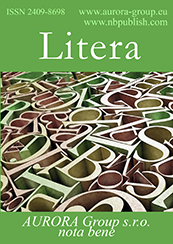Literary criticism
Reference:
Xu, C. (2024). The children's poetic story about the travels of foreigners in the USSR in the 1920s and 1940s. Litera, 11, 97–106. https://doi.org/10.25136/2409-8698.2024.11.72279
Abstract:
The main purpose of the study is to analyze the genre originality of the Russian (Soviet) children's poetic story of the 1920s-1940s about the travels of foreigners in the USSR, to identify the didactic significance of these works. The article is based on the works of L. Lesnoy, P. Yakovlev, L. Zilov and S. Marshak. There are two types of poetic stories about the journey of foreigners: pilgrimage trips of disadvantaged children from oppressed countries / curious Western children, as well as trips of wealthy Westerners to the USSR. The general genre features of this type of works are analyzed, including information content, specific chronotope, descriptions of the road, the environment, etc. In addition, the unique features of these works are considered: the use of elements of other genres (fairy tales, adventures, travel), an emphasis on solving ideological and semantic tasks. In this work, the topics of internationalism, unity of peoples, racial discrimination, as well as problems related to Soviet ideology, norms of behavior and universal morality are updated. The scientific novelty of the work lies in a comprehensive approach to both classical and little-studied material, including works by forgotten or lesser-known poets. Among the research methods used in this work, several key approaches are distinguished: comparative, hermeneutical, comparative typological and immanent analysis. With the help of various artistic techniques, such as contrast, detailing, the use of emotionally colored vocabulary, metaphors, repetitions, epithets, the motif of a dream, genre elements of a riddle, a shifter, etc., the complex physical and spiritual path of the characters to the ideal is reproduced, the image of oppressed countries and their inhabitants, as well as the image of ordinary Soviet people and cranks are created-rich people from the West, a wide range of Soviet realities is reflected through a detached look. As a result of the research, it is revealed that the poetic story about the travels of foreigners in the USSR of the 1920s and 1940s has a unique didactic significance: it is not only entertaining and informative for young readers, but also contributes to the creation of a positive understanding of Soviet reality and ideological foundations.
Keywords:
didacticism, dream motif, cranks, journey, image of oppressed countries, adventure, Soviet ideology, travels of foreigners, poetic story, Russian children's literature
 This work is licensed under a Creative Commons Attribution-NonCommercial 4.0 International License.
This work is licensed under a Creative Commons Attribution-NonCommercial 4.0 International License.
 Eng
Eng













 © 1998 – 2025 Nota Bene. Publishing Technologies. NB-Media Ltd.
© 1998 – 2025 Nota Bene. Publishing Technologies. NB-Media Ltd.




